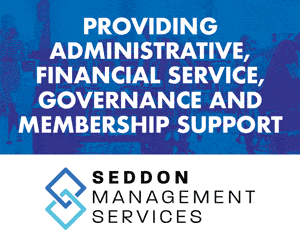Insight from Tamsin Dehurst, Founder and CEO of Uptree
Trend 1: ROI that measures impact, not just hires
Employers will make adjustments to shift away from hiring data as the only ROI measure, to include student impact and engagement. Candidate experience as a whole will also be considered, and enable a move from transactional to transformational talent engagement.
These changes are driven by wider company objectives around “employee experience”, which will include candidate experience. Candidate experience will grow in importance in line with the need to maintain a company’s brand and reputation, including evidencing how businesses are acting responsibly.
“More C-level leaders will make the employee experience a broad strategic objective in 2023, experts say, removing it from its human resource silo.” (Source: SHRM 2023)
“For HR and business leaders, the S in ESG will have heightened importance as both new regulations and boards of directors are leaning into talent issues like talent acquisition and retention, diversity of new hires and current workers, development of next generation talent, and pay equity and transparency”. (Source: Forbes 2023)
ROI will be re-defined to reflect a wider set of strategic company goals. Retention and progression will be measured, as well as more detailed diversity data, candidate experience, and environmental, social, and governance (ESG) data. Accessibility and inclusivity at each stage of Future Talent engagement will be measured too.
Redefining ROI that showcases the whole impact of your team will result in a strategy that puts candidates first. Short term attraction campaigns and one-off employer branding activities will turn into longer, more meaningful approaches to engaging students from all backgrounds. Future talent will be taken on a nurturing journey with a potential employer.
This will move Talent teams away from box-ticking exercises into more longer term solutions that will lead to a sustainable and skilled pipeline of diverse future talent. At the same time, Future Talent teams will have heightened importance and awareness among their senior business stakeholders as a result.
Uptree measures student impact by looking at demographic data of students reached and those that have engaged in industry-led careers learning, such as our online courses or employer events. As well this, we track students that reach the final interview stages and identify gaps to make improvements along their journeys. We also identify qualitative measures, such as career perception and confidence changes over time. To discover more insights on measuring ROI within Early Careers and talent, watch our employer webinar with Sharon Blyfield OBE.
Trend 2: Automation and efficiency in an economic downturn
Future Talent teams’ focus will move to cutting costs in the current economic climate. However, teams should avoid moving to transactional recruitment, as mentioned in trend 1.
However, repetitive administrative parts of the future talent process will become outsourced or automated to save on time and costs.
“Nearly 1 in 4 organisations report using automation or artificial intelligence (AI) to support HR-related activities, including recruitment and hiring.” (Source: SHRM 2022).
Organisations should have an understanding on how to mitigate the negative impact. Importantly, there is a need to ensure systems do not eliminate candidates who may not have access to the resources to craft the type of applications that pass AI based tools.
The drive for efficiency will lead to outsourcing part of the future talent engagement strategy. Working with the right suppliers can save employers time and money through expertise, tried and tested processes and ready built talent networks. Uptree uses automation and refined processes to connect with schools across the UK efficiently, and ensure they have the resources they need to support all their students.
We aim to deliver the best student outcomes through our student notifications, application management processes, event communications, data destination tracking, and our student experience surveys. This means that Talent teams can save their energy for when it really matters – real human interaction with potential candidates, often in-person, inspiring young people to take the best next steps in careers that are unique to them. This part is hard to automate, which is why one of our Uptree values is ‘humans before technology’.
Trend 3: Employee fulfilment for retention
Employers that adopt a ‘candidate first’ and impact centred approach to recruitment will find candidates are better matched to the position, as well as the company’s culture and values. This can mean that there is less employee turnover as a result. Retention will continue to be a focus in 2023, following on from the Great Resignation of 2021/2022.
“Of more than 2,000 respondents in a PwC survey published in May this year, 18% said they were likely to change their job in the next 12 months, with 32% saying they were moderately or slightly likely to. The top three factors for making a job change included pay, wanting fulfilment, and wanting to be themselves at work. (Source: The Week 2022)”
In order to retain and progress talent, there will be more emphasis placed on Future Talent teams to ensure better matched candidates from the outset as well as opportunities for progression, learning and opportunities for making an impact.
Employee experience, including reducing burnout, will be a key focus on businesses looking to retain talent. Companies will need to show how they live and breathe the company values and promote their culture, as well as focusing on the wellbeing and fulfilment of their employees.
Uptree supports its employer partners by offering volunteering and learning and professional development for their current employees, by providing opportunities for teams to engage and inspire students in their local communities. Community investment is a great way for talent engagement and experience teams to come together on a shared purpose that links to the company’s strategic talent and diversity, equity, inclusion and belonging (DEIB) goals, as outlined in trend 1 and 4.
Trend 4: Collaborations between CSR and Future Talent teams
With a move towards measuring the social impact of Future Talent teams, as outlined in trend 1, we will start to see more collaboration between CSR and Future Talent teams.
“To prosper over time, every company must not only deliver financial performance, but also show how it makes a positive contribution to society.” (Larry Fink, Chairman and CEO, Blackrock)
Millennials and Gen Z want to work for purpose driven companies. Employer brand teams are well versed in finding ways to put engaging careers content out into the world. However, there will be a continued drive for brand teams to find innovative ways to engage with Future Talent, before they enter the recruitment funnel.
One way to catch the next generation’s attention is to showcase your brand’s purpose or CSR statements, but this won’t be enough alone. Brands need to show that they take action to deliver on that purpose and CSR statements.
There’s clearly a need for more to be done in our society and at an education level to raise awareness of careers and pathways. This was shown recently in Uptree’s 2022 Student Survey results where;
- 58% of young people said that they don’t feel prepared to enter the workforce.
- 77% said that attending employer events prior to applying would help them to feel prepared for a professional environment.
- One student quoted: “I really want to do a degree level apprenticeship in the finance industry but I really don’t know how to get there.”
Finding activities that raise awareness of your organisation including the showcase of your mission, values, career pathways, roles, responsibilities, salaries and progression, is now vital to engaging Future Talent.
However, reaching students through social media and careers websites will not be enough to attract the best diverse talent. To stay ahead of competitors, companies will need to find interactive and meaningful ways to engage and up-skill future talent over longer periods of time. For example, getting a head start with the application stages to offer bite-size pre-employment training and events will support students in applying and ultimately succeeding through rigorous processes.
Upskilling on soft skills as well as professional networking opportunities for future talent will be especially important for engaging and supporting under-represented talent into the business. There will also be a need for materials and events to be teacher, parent and student friendly, which will make them more accessible and impactful as a result.
However, as mentioned in trend 2, there will be a drive to do this in ways that don’t add to the already heavy workload of Future Talent teams. Working alongside providers such as Uptree, where school contacts and education production expertise is available, could be helpful to achieving these types of goals without adding to the workload.
A win-win of greater collaboration between CSR, Future Talent & Communication teams is the wider impact on an organisation’s brand and reputation in the communities they operate in.
Trend 5: Building on Diversity & Inclusion Programmes
There’s a risk that during a potential economic downturn, employers will go backwards on diversity, but they shouldn’t. It’s well known that diversity only adds value to an organisation.
“According to McKinsey research, companies in the top quartile for gender diversity were 25 per cent more likely to experience above-average profitability. “ (Source: FT 2022)
Rather than cutting budgets, forward-thinking companies will review what they have achieved over the past few years since the Covid-19 pandemic. Using diversity data in attraction, retention and progression, they could make informed decisions on what programmes are and are not working.
As of this month, large employers in the London Stock Exchange now have to share progress towards benchmarks in annual reporting. These include how many women make up the board of directors and most senior roles, and whether at least one member of the board is from an ethnic minority background. We predict that the benchmarking will continue to feed down into other areas of businesses, leading to more targets around gender and race being set at junior and middle management levels.
In 2023, we see a growth in companies looking to address socio-economic diversity of their organisations. There has been some great work in this space already, namely by one of our Employer Partners KPMG. They state, “Socio-economic background has the strongest effect on an individual’s career progression, compared to any other diversity characteristic.”
Recently, Uptree contributed to the City of London Socio-Economic Task Force report, “Breaking the Class Barrier”, which highlights strategies to boost socio-economic diversity at senior levels in UK financial and professional services. Uptree shared insights on how employers can deliver effective outreach in targeted schools to ensure that all young people have access and opportunities to reach the top career pathways.
Many firms use parental occupation (i.e. the occupation of the highest earner in your household at age 14) to measure socio-economic background. At Uptree, as we work with young people predominantly aged 16-19, there is an opportunity for organisations to consider other holistic measures that are readily available, and potentially less intrusive, such as Free School Meals (FSM) and first generation in the family to attend university.
As well as looking at demographic data of the students in our network as they join our platform, as mentioned above, Uptree also looks at the data across all our school partnerships. In particular, we target and support schools that meet our outreach criteria; such as average FSM, ethnic diversity data, English as an additional language (EAL), and social mobility ratings – as reported on the gov school website. This gives us access to a unique pool of talent from underrepresented backgrounds and lower socioeconomic communities as a whole.
We foresee an increased focus on strategies for diversity, equity, inclusion and belonging. Moving forwards, drawing on trend 1 and 3, it will be vital that ‘belonging’ is included in the equation.























































